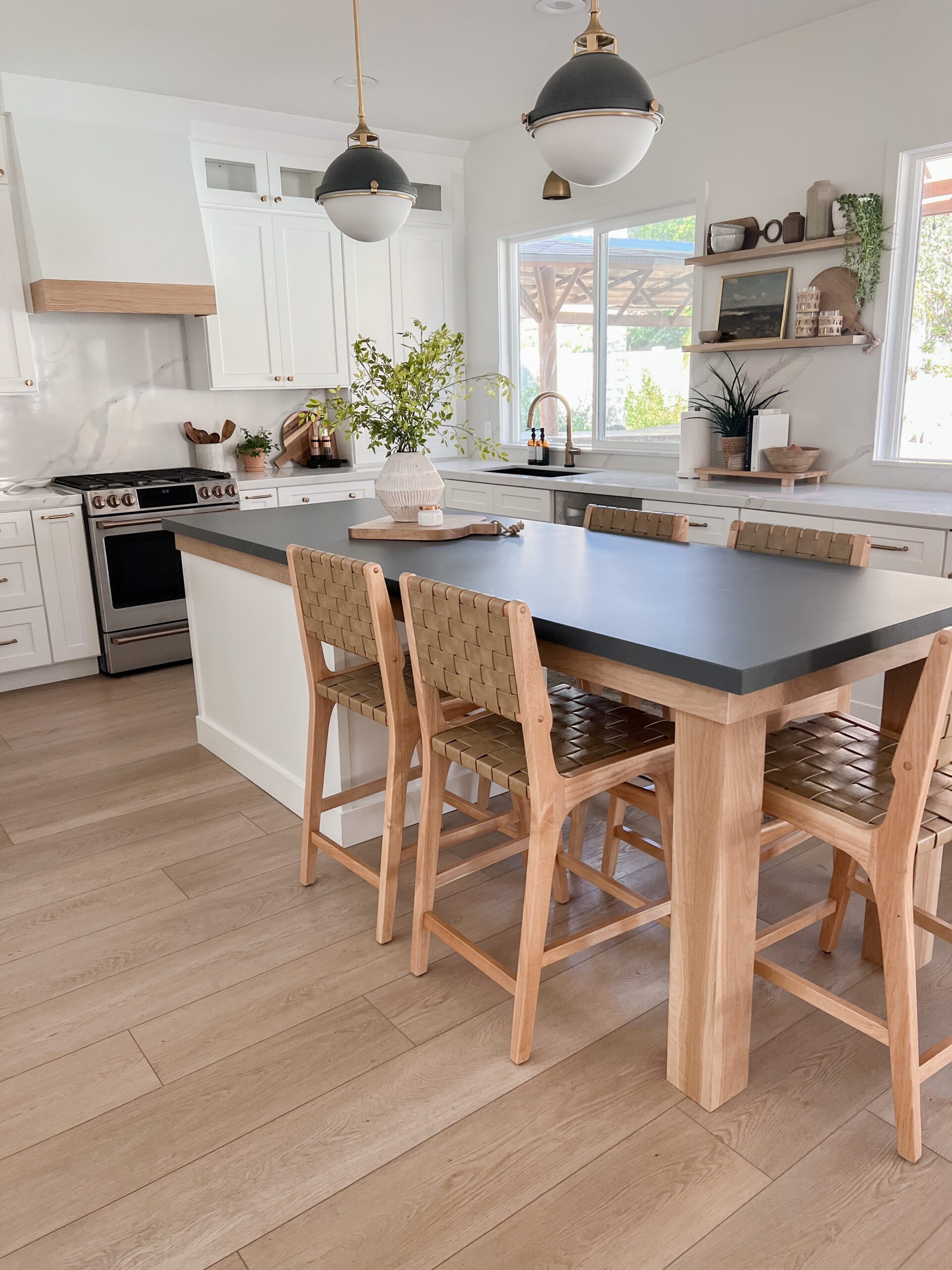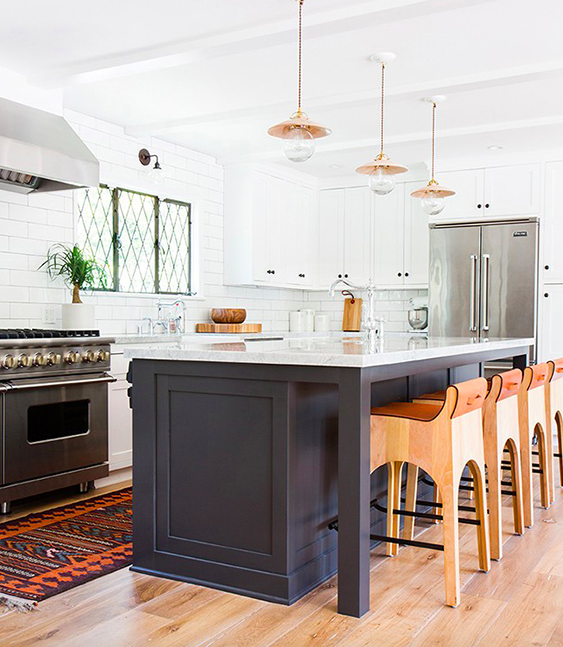Upgrade Your Kitchen's Visual with Premium Legs For Kitchen Island
Upgrade Your Kitchen's Visual with Premium Legs For Kitchen Island
Blog Article
Discovering the Numerous Designs of Legs For Kitchen Area Island: What You Need to Know
In the realm of kitchen design, the choice of legs for your island is greater than a simple aesthetic decision; it significantly affects both design and practicality. From the sleek elegance of modern metal to the timeless appeal of traditional wood, each choice presents unique benefits and layout opportunities. Industrial designs can give a tough personality, while rustic farmhouse legs evoke a sense of heat and tradition. In addition, the introduction of one-of-a-kind ornamental legs enables personal expression within functional furnishings. The inquiry continues to be-- how do you identify which design ideal lines up with your vision?
Modern Metal Legs
Modern steel legs have ended up being a popular option for kitchen islands, supplying both toughness and a smooth visual. These legs are generally crafted from products such as stainless steel, light weight aluminum, or wrought iron, making them immune to use and tear, which is vital in a high-traffic area like the kitchen area. Their durable building guarantees stability, suiting the weight of heavy kitchen counters and daily use.
Along with their toughness, contemporary steel legs can be found in different designs, from minimal to commercial styles, permitting homeowners to customize their cooking area islands to their one-of-a-kind preferences. The reflective surface areas of metal can add a modern touch, boosting the overall illumination of the kitchen room. Metal legs can be paired with a large range of countertop materials, balancing flawlessly with granite, quartz, or even recovered timber.
Another advantage of metal legs is their ease of upkeep; they can be merely wiped down to remove any spills or spots, ensuring long life and sanitation. Generally, contemporary metal legs not only supply structural support for kitchen islands but also add significantly to the visual appeal, making them a popular choice for contemporary kitchen styles.
Traditional Wood Legs

Traditional timber legs can take various forms, including turned, tapered, or square designs. Transformed legs include a spherical profile with ornate outlining, adding a touch of sophistication. Conical legs, on the various other hand, supply a more structured look while preserving a standard ambiance. Square legs supply a robust look, which can develop a sense of security and weightiness in the design.
Furthermore, wood legs can be discolored or painted to match existing cabinetry or design, offering personalization choices that enhance the total aesthetic of the kitchen area. Coupling these legs with a timber counter top or various other wood components can produce a cohesive appearance, highlighting the warmth and character that conventional timber offers kitchen area islands. Therefore, typical timber legs continue to be a timeless option for those seeking elegance and performance in their cooking area design.
Industrial Style Legs

The adaptability of commercial legs enables them to match a variety of countertops, from redeemed wood to brightened concrete. Their inherent toughness guarantees toughness, making them appropriate for durable use. In addition, the minimalist design commonly connected with industrial design legs can enhance the total area without overwhelming it.
Shade options click this typically vary from matte black to brushed nickel, permitting modification to suit private choices. Legs For Kitchen Island. In addition, industrial legs can be incorporated right into different cooking area arrangements, from open-concept spaces to extra portable layouts. This adaptability makes them an eye-catching choice for modern-day property owners looking for both capability and style. Eventually, commercial design legs can change a kitchen island into a statement piece, weding form and feature in an unified fashion.
Rustic Farmhouse Legs
Rustic farmhouse legs symbolize a lovely mix of practice and heat, making them a popular choice for kitchen areas that seek to evoke a relaxing, welcoming ambience. Identified by their sturdy construction and all-natural materials, these legs commonly include wood with a distressed finish, showcasing the elegance of blemishes that features age. This aesthetic not just enhances the farmhouse design but also includes personality and credibility to the kitchen area space.
Usually, rustic farmhouse legs are made with robust, chunky accounts that offer substantial assistance for the cooking area island. Typically crafted from recovered timber, they add to a lasting layout while providing an unique tale through their diverse structures and tones. The natural grain patterns and knots discovered in these materials enhance the visual appeal and bring a sense of nature inside.
Along with their aesthetic Get More Information value, rustic farmhouse legs can be coupled with numerous tabletop products, such as butcher block or rock, creating an unified equilibrium between rustic appeal and contemporary capability. This versatility allows home owners to personalize their cooking area islands according to individual choices, making certain that the space continues to be both useful and fashionable for daily use.
Distinct Attractive Legs
Often ignored, distinct decorative legs can change a conventional kitchen island right into a statement item that mirrors specific design and creativity. These legs serve not just as architectural supports however additionally as creative expressions that boost the total aesthetic of the cooking area.
Readily available in a selection of designs, one-of-a-kind ornamental legs can vary from complex wrought iron scrollwork to strongly transformed timber patterns. For those leaning towards a much more modern-day appearance, sleek steel legs in geometric forms can supply a minimalist yet appealing allure. Additionally, reclaimed wood legs with artisanal detailing bring heat and personality, lining up with lasting design principles.
Incorporating distinct ornamental legs into your kitchen area island permits limitless personalization. Color, structure, and type can be manipulated to harmonize with existing design or to present an interesting comparison. As an example, combining a rustic wood top with polished brass legs creates a striking association that attracts the eye.
Eventually, picking one-of-a-kind decorative legs is a chance to express individual taste while making sure functionality. By focusing on both layout and resilience, homeowners can produce a kitchen island that not only stands out yet additionally functions as a practical focal point for culinary ventures.
Verdict
Modern metal legs give a sleek appearance, while traditional wood legs supply heat and personality. Industrial-style legs present a metropolitan allure, and rustic farmhouse legs highlight all-natural elegance and strength.
A range of traditional timber legs can improve the appeal and warmth of kitchen islands, appealing to house owners that prefer a timeless aesthetic. Pairing these legs with a wood countertop or other wooden elements can produce a cohesive look, stressing the heat and personality that typical wood brings to kitchen area islands. Modern steel legs supply a smooth appearance, while typical wood legs supply warmth and personality. Industrial-style legs introduce a metropolitan appeal, and rustic farmhouse legs highlight all-natural beauty and durability. Distinct attractive legs serve as a way of customization, ensuring that the kitchen area island not only sustains functional usage yet also boosts the total design of the cooking area.
Report this page